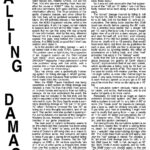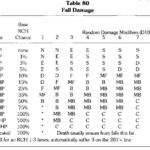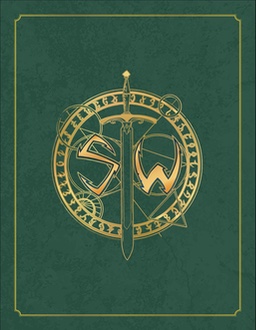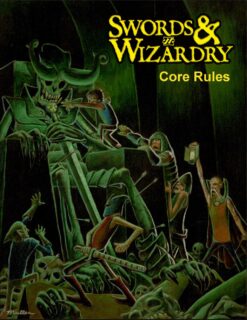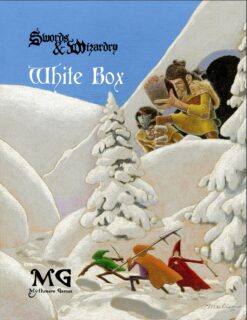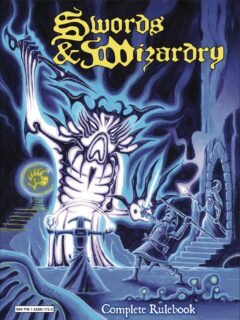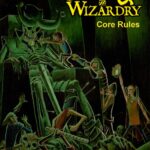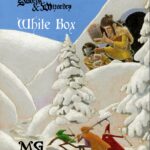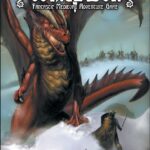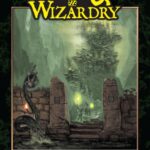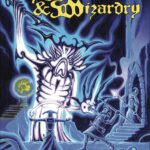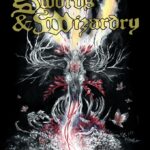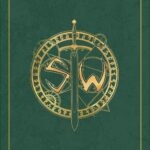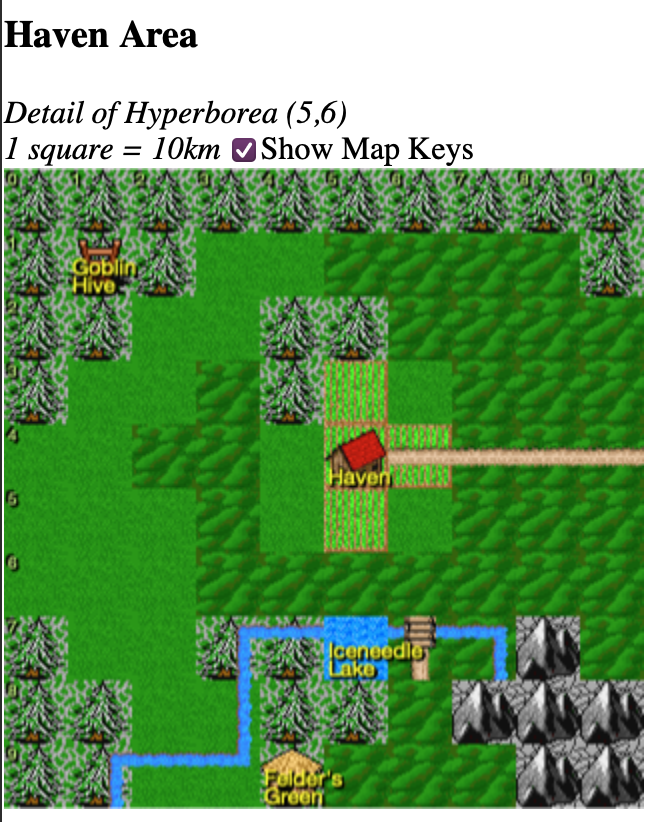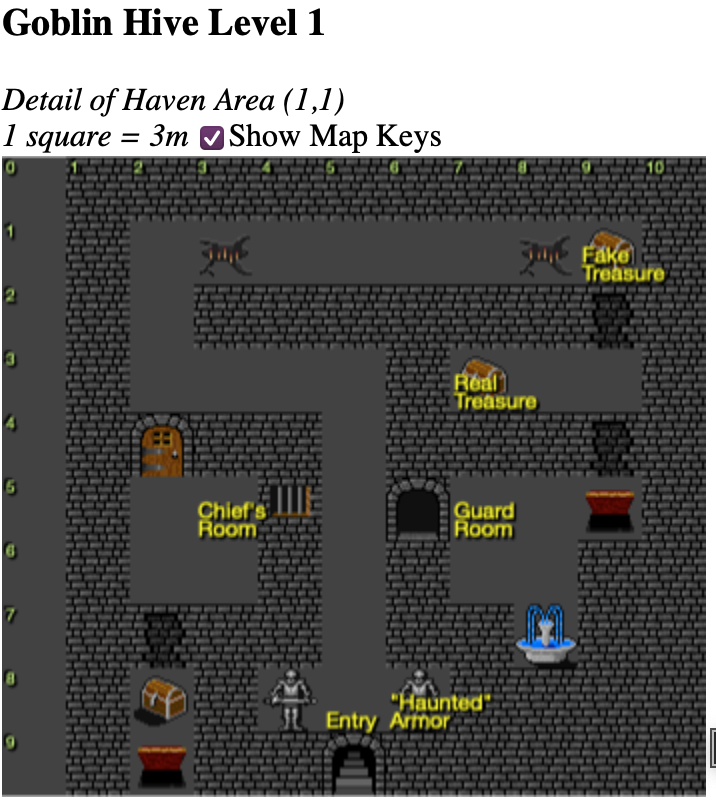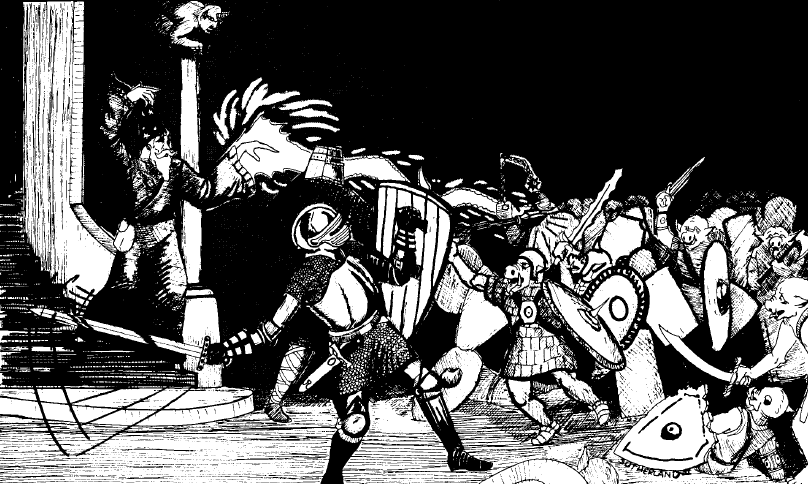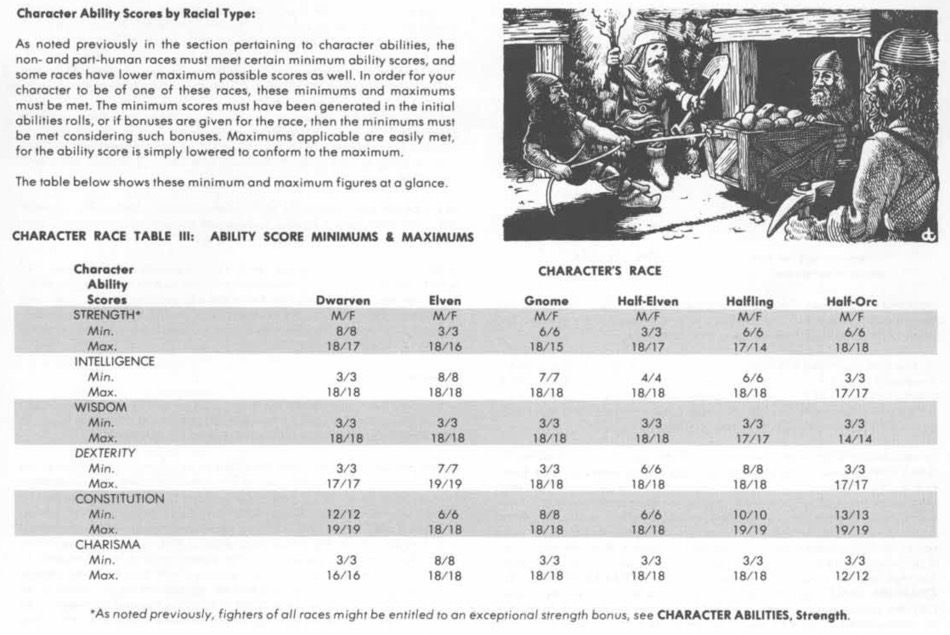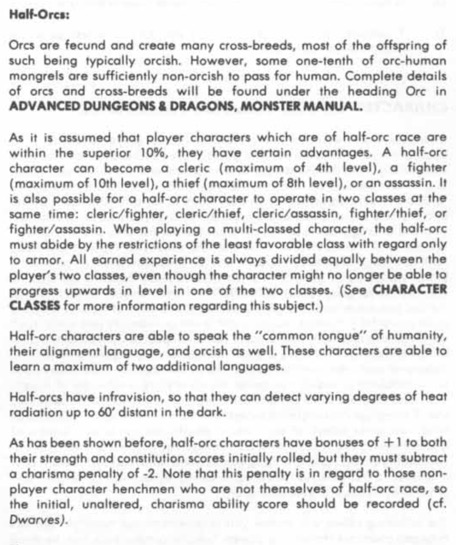One of the many OSR retroclones of some form of early Dungeons & Dragons, is Basic Fantasy RPG, by Chris Gonnerman, originally in 2006, and has lately been fully cleaned up as Creative Commons, no OGL or other license problems. And just recently his other game Iron Falcon, from 2014, has got the same CC cleanup and rerelease.
On both sites, the PDF or ODT (LibreOffice) files for the game and many (in BF's case, MANY) adventures are free, or you can buy a printed book from 'zon or Lulu. BF and adventures are sold at cost so are very cheap, Iron Falcon's priced a little higher but I got the hardcover rulebook for $22 and adventure for $8. Half the price of anything else you'll get!
Wherein I talk too long about game minutiae:
Basic Fantasy
BF is a pretty straight copy of Basic/Expert (1981). Most of it's much more terse than the original game. "Race" (I prefer the term Species) is not class: Some of the races (Dwarf, Elf, Halfling, Human) have limited lists of classes (Cleric, Fighter, Magic-User, Thief, F/M-U, T/M-U for Elves only), but there are no Level limits. So there's not really any purpose to being Human; he tries to balance that a little by giving 10% experience bonus, and an option in the back suggests you can double that. While I don't run a Humans-only game, I find it weird that so many games have devalued Humans to the point where you never see them played. Almost all fantasy literature stars Humans!
Levels go up to 20, rather than 14 in B/X. Clerics have a smooth spell distribution (I don't use them, but OD&D and B/X have a weird gap at Level 6 giving spell levels 3 & 4 at once; in BF L6 just gives SL 3). Fighters don't have War Machine/Cleave/Sweep etc, or any special abilities really. Magic-Users have a simple spellbook of Read Magic and one other spell, which is fine. Thieves get the usual list of skills with percentile chances, no species modifiers.
There's no alignment system. Which is fine, I often ignore or rewrite it for characters, but it's a serious lack in the monster listings.
Experience points gained for combat are 2-4x higher than B/X, Supplement I Greyhawk, or AD&D, so monster-bashing at lower levels is practical. "Non-combat challenges" are the only other source of EP ("XP") listed, gold for EP is listed in the optional rules.
Equipment list is decent, and most items have a paragraph explanation. Weapons could be longer but it's fine, and has variable damage listed, but not "damage vs large", which is useful to give Fighters an edge at higher Levels. Armor uses ascending AC only, base 11 (which I prefer, it makes 20-DAC=AAC (descending, ascending), but many OSR games use base 10, so 19-DAC=AAC), and chain and plate armor are priced reasonably (60/300 GP). Oddly, shields are 7 GP? Good list of land & water vehicles, and there's a very little bit of vehicle rules in Adventure and Combat, not a full wargame.
Encumbrance and movement is oldest-school weight tallying, rather than items or other faster systems; when every GP is 1 EP and you have to optimize weight to return value, that's "fun" for some people, but I can't anymore. Dwarfs & Elfs both get Darkvision, so the lighting rules are somewhat optional, but there are decent procedures here for dungeon exploration & long-term survival.
Initiative's individual, but only d6 + Dex mod, so there'll be a lot of simultaneous actions, which isn't resolved in detail. Maneuvering, charging, disengaging, running away, missile fire, grenades, cover, "flaming oil" (unrealistic but classic), a page+ of unarmed combat systems (oh no), energy drain, healing, falling, deafness/blindness, and how to use saving throws, combat has a good dozen pages of rules which handle most situations, MUCH more clearly than the original game or many retroclones.
There's 27 pages of spells, 100 pages of monsters, 17 pages of treasures. The spell book is excellent, basically everything from every variant of B/X and then some, to high Levels.
Monsters do not have any Demons, but do have dog-kobolds called Barklings, various weird renamings to avoid OGL like "Flicker Beast" for Blink Dog, "Deceiver" for Displacer Beast. Dragons (Cloud, Desert, Forest, Ice, Mountain, Plains, Sea, Swamp, Turtle) use randomized HP & breath weapons, not the traditional age-points-per-die, so an adult Red ("Mountain") Dragon with 10 HD has 10d8 HP and breath damage, rather than fixed 40 HP & damage. The fixed values made it easier to do rules of thumb and work out if you COULD take a Dragon on, rather than guessing at random values.
Treasures are fine, treasure codes like OD&D treasure types, and good variety of items. There's a grid for generating new form/effect combos for classic items. I go off-book of treasures very quickly, but if you're just stocking from this one book, it's adequate.
Then a score of pages of semi-random GM help, essays, and optional rules, with a couple very minimal dungeon & stronghold maps, and tables for filling dungeons. I don't know that that's sufficient for a new GM to learn to run, it's about as much as B/X but smaller scale.
There's a stat ("ability") roll system, but it's not great: Level/2 gives a target number, then roll d20 + stat bonus to beat that TN. Table lookup is annoying, modifier instead of direct use. Why not just roll under the stat, why involve Level at all? In this a Level 10 with DEX 3 needs 15+, same as a Level 1 with DEX 15; why even have stats?
So most of that sounds great. I've tried running BF, and found it was kinda goofy. Bonuses are very large compared to base class/Level abilities. The very weak Fighters need at least a couple improvements. Initiative is, as in so many OSR games, a mess that cannot have been playtested as written. The lack of Demons can be solved with the "Basic Fantasy Field Guide of Creatures Malevolent and Benign" (damn few benign), which calls them "Infernals". It's definitely close to the right OSR game, but not quite there for me.
The supplements for BF are fine, adding some combat options, monsters, and new classes. The adventure books tend to be very Generic Fantasyland Theme Park, boxy maps with mediocre design, a lot of boxed text to read and checkboxes for HP. Several are overtly "copy an old TSR module but make it blander than mayonnaise on white bread".
BF: ★★★★☆
Field Guide: ★★★☆☆
Adventures: ★★☆☆☆
Iron Falcon
IF is explicitly an "OD&D 3LBB + Supplement I Greyhawk" and nothing more. In many ways, this is much, much more my jam, scruffy rogues getting rich or dying in dungeons. It's SO VERY CLOSE.
I'm going to be complaining here, not so much about Iron Falcon, but about Greyhawk. And IF is catching buckshot because it has some Greyhawkisms.
The core of the problem is CG: "Dedicated to Gary, without whom none of this would exist."
But yes it absolutely would. Dave Arneson created role-playing games as we know them; and if some cobbler from Lake Geneva hadn't published it, Blackmoor (and his friend Dave Megarry's Dungeon) would still have spread everywhere in the world and we'd be playing something very similar. And the problem in these rules is the influence of Gary's power-creep Supplement I: Greyhawk.
CG: "Ultimately, though, this game is not a representation of those rules as they were written nor even as I understand them but rather as I would play them. It seems there is no way to avoid getting a little bit of myself into the mix."
Stats ("Abilities") are the start of this, with the Greyhawk Strength & Intelligence tables. OD&D had no physical bonus for STR, only higher Fighter experience (so high STR = faster advancement = stronger fighter). I don't object to bonuses, but when they're SO heavily loaded on high stats, Greyhawk rewards 16-18 so much more, several Levels' worth of bonuses, that you have to get high rolls or you're trash. At least IF moves the percentile STR (18/01 to 18/00, giving +4/+6 bonuses!) superhero bonuses to an appendix.
Same for the insane Greyhawk Intelligence chart, which determines a Magic-User's Chance to Know, Min #, Max #, Max Level of spells; but it implies that you have access to all spells ever created, and you just somehow acquire them if you make this roll. Totally destroying the concept of magic from H.P. Lovecraft and Jack Vance's stories, where magic is a rare and poorly understood art with a few spells carefully studied, hoarded, and protected with ciphers. There is at least some understanding of the problem here, with a "Limited Spell Lists" option in the appendix, or the alternative "Extended Spell Lists" which requires you to buy a 2000+ GP spellbook for each Level, and you're just wandering around with this loot. I admire the attempt to rationalize this nonsense rule, but it's not OK. The BF spell acquisition rules are perfectly fine, so this was unnecessary. Swords & Wizardry has it, too, but then mostly ignores it in favor of spell acquisition.
Dexterity also adjusts AC with ridiculous –1 to –4 bonus; this is in most games at least left as an option for Fighters in light armor to parry, but here it's for everyone. AC inflation (deflation).
The good old "Trading Ability Score Points" mechanic where you get 1 for 2 or 3 from non-primary Stats to your prime requisite. In OD&D and Holmes, this only helped experience, 13 is as good as 18 for many things, but here it allows you to hit those absurd bonuses. Strike that out.
Classes (usual 4) go up to Level 22; OD&D Magic-Users went to 16, others to 10, while Greyhawk advanced M-U to 22, Cleric to 20, others to 14. EP costs are a little lower than OD&D or BF. Thieves have percentile skills and species ("racial") adjustments. Clerics have a newly weird spell table which isn't based on any version; good thing I don't use Clerics.
Species ("races") are Dwarf, Halfling, Elf, Half-Elf, with strict Level limits by class except Thief, and yet another variant of how multiclass works. Elf gets +1 to hit with sword & bow, Dwarf gets +1 to hit & AC vs giants, Halflings get no stealth but +3 (WTF) with sling, Half-Elfs get multiclass. Again sorry Charlie Brown, the Humans get a rock, tho this time Level limits mean you'd only play a demi-Human Thief or multiclass if you wanted long-term play.
There is a Law/Neutral/Chaos alignment system, as morality/group work, which at least means monsters have some indication of team.
Equipment's substantially reduced from BF, it has many of the same items but no descriptions, prices for armor are ridiculously low (like OD&D). And yet the weapon table is fully detailed, with "damage vs large". Range bonuses have varied between editions, none in OD&D ("see Chainmail" it says), Holmes and BF have +1/+0/–1 for short/medium/long, AD&D has +0/–2/–5, while Greyhawk has a horrifying table with different modifiers for S/M/L for each weapon vs armor. IF goes to +2/+1/+0, then in the appendix includes another version of the Weapon vs AC table. The problem is, the table's broken.
Delta: Big Mistake in Weapon vs. Armor Adjustments
So I'd say that any 1E players who are still engaged in this gnashing-of-teeth exercise with these tables would be wise to put it to bed, because the whole effect of those tables in O/AD&D was fundamentally broken all along.
So anyway, I've traditionally gone with +0/–1/–2, or +0/–2/–4 for S/M/L, because those make bows less effective than melee, which is better for swords & sorcery, Conan rushing thru a swarm of arrows to cleave the enemy. All rules are wrong!
IF uses by default DAC (Descending AC), which is seriously just why is this still a thing in 2025? It's a historical error that shouldn't be around. Anyway, big table of class vs AC. BUT, in the appendix there's a proper AAC (Ascending AC) and Base Attack Bonus table, and the monsters all list DAC (AAC) format, so you can play like it's 1999.
Combat rules are much reduced from BF, but in most cases it's just as good. Initiative is side-based, but Dex modifier can move a character faster or slower than their side; that's… not unreasonable. I don't usually do around-the-table order, but it's faster and with only two rollers, simultaneous is less likely. It has an option for individual initiative, but tells you to decide how to split it.
Charging, healing, morale, flaming oil 🙄, turn undead if you do that, energy drain, falling, poison, and saving throws. No rules for disengaging or movement here.
Then follows 26 pages of spells. Again very complete, the one thing I liked about Greyhawk. A number of these spells are not in BF, and at the higher end are more powerful.
54 pages of monsters. Half the variety of BF. Still no Demons, but they weren't in 3LBB+Greyhawk, so I guess that tracks. Dragons (Black, Blue, Brass, Bronze, Copper, Gold, Green, Red, Silver, White) are back to age-points-per-die, called by color not some terrain (where does a Red Dragon live? Anywhere it wants to!) Vastly more useful for running classic adventures, but the lack of some weirdo monsters can be an issue. But there is a "Handbook of Monsters" which fills the gaps, adapted from the BF Field Guide.
30 pages of treasures, very similar to BF, but no form/effect table. In Appendix B are 4 pages of Intelligent Sword rules.
Adventuring chapter's buried way in the back, but otherwise similar to BF.
Another problematic Greyhawk table returns, as the Experience Point Awards. To advance from 1st Level to 2nd as a Fighter, in OD&D (straight 100 EP per HD), you'd need to kill 20 Orcs (1 HD), or 5 Ogres (4+1 HD). In BF, you'd need to kill 80 Orcs or 8 Ogres (4+1 HD). In IF you'd need to kill 133 Orcs (1 HD) or 10 Ogres (5 HD)! So you see you're saving lives by using a faster progression! Of course being a more strict OD&D, 1 GP = 1 EP, and some claim that's the right way to Level, but it makes all adventures pecuniary instead of derring-do. An accountant might love that, but I don't.
Finally, Appendix A, Alternate "Combat" Rules. Exceptional Strength, no. Ascending Armor Class, yes. Paladins, no; this is the Greyhawk interpretation where they are a bonus given to Lawful Fighters with Charisma 17 which was almost certainly a cheat code for one player. Weapons vs Armor Type, ha ha no not ever.
A few pages of optional rules for spells (see above), and a page of how to deal with death, mostly raise dead; ha ha no not ever. Negative ten rule, fine, I don't want players constantly rerolling, but it's not a canonical rule.
I got the book as hardcover, POD (Print on Demand). It's nice looking, great B&W homage by Alexander Cook to the B/X dragon fight by Erol Otus. Cover curls outwards a bit, but I'll press it and see if that gets it flatter.
I also got the "Iron Falcon Adventures Volume One". It's four short adventures, not particularly inspired, but playable dungeon crawls. I didn't get print of Iron Falcon 75: The Lakeside Adventures, which uses IF to run a Magic Comes Back game in small town 1975, modern-ish equipment; amusing but I'd use Call of Cthulhu or my own Nightmare Eve for that.
I'm still hacking around on some house rules, but it's not that much to remove the stuff I dislike and get a pretty good edition. It's unfortunate some of the choices were made. If I get ambitious, the right answer would be to edit the ODT file, remove Greyhawk as if it never existed, add in vital things it's missing (Demons), and get it printed & bound properly; it's CC licensed, so I can do that. We'll see. OR, I can just pillage it for more parts for my Little Sword Game, which already uses some BF text for spells, but is a fairly different kind of game, not trying to be historical.
Iron Falcon as-is: ★★★½☆
Iron Falcon minus Greyhawk: ★★★★½
Greyhawk powergaming: ☆☆☆☆☆
Adventures Volume One: ★★☆☆☆
